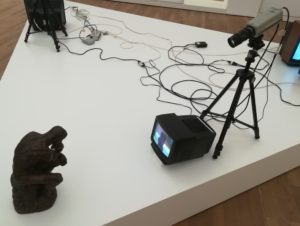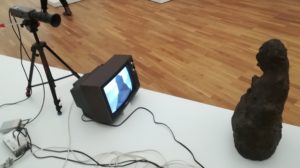This morning I chanced upon a podcast interview of a Chan Buddhist monk, going by the dharma name of Guo Gu, who also lectures on East Asian Religions in an American university as Jimmy Yu. Jimmy, like the interviewer, had been involved in punk and hardcore bands in New York in the 1980s, having played bass for influential bands such as Death Before Dishonor and Judge. There is something wonderful about individual stories with such contrasting colours. In the interview, they were discussing both Buddhism and the hardcore band scene, and Jimmy mentioned that he recalled participating in mosh pits at that time.
[Jimmy Yu] We went through that age, from maybe 13, to 17, 18, and then I just kind of dived into Buddhism, during my college years, Chan, Zen Buddhism in particular. But I do want to say something, tag on a footnote about that. There’s a camaraderie, you know, we were kind of all marginalised, and we’d go all angry, but in the shows, you know, on the dancefloor, and the matinees, and our gatherings, we all found a sense of transcendence, at the time, I didn’t know what the word transcendent means, but it’s kind of unspoken, but there’s a sense of freedom, when we dived off stage, when we went all out, and we were in bands and playing, there’s a kind of social critique, we’re part of the society, but we’re outside of it, and slam dancing, and so on, so there’s a real transcendence there that united us, and that, I link, to the kind of freedom that I found in Chan and Zen.
[Interviewer][ You know, I’ve been in a circle pit at a Sick Of It All show, and you are completely present in the moment. There’s nothing that is distracting you from being in that circle pit during Sick Of It All.
The interview was Episode 36 of the Classical Ideas podcast by Greg Sodon.
If you are unfamiliar with the notion of a mosh, or circle, pit, it refers to a more-or-less spontaneous outbreak of vigorous, almost violent, dancing typically happening in front of the stage at punk, heavy metal, and similar concerts. The music is loud, fast, and incendiary. Those involved engage in highly agitated movement that is almost, but not quite, combative. Individual dancers deliberately slam into each other (that’s the “slam dancing” above), elbows are wielded robustly, and it is quite possible to get hurt. There is, however, essentially no antagonism, and if one dancer goes to ground, the others will immediately ensure that he or she is lifted back to their feet, or removed from the circle if that is warranted. To the onlooker it can appear perilous, even frightening. Those taking part, however, are usually very enthusiastic, and, as the interviewer and interviewee seem to agree, they are completely caught up in what they are doing. The phrase used “completely present in the moment” is quite conventional now for describing this kind of concentrated presence, but as it stands, that phrase does not manage to describe what is going on at all well. The notion that one could be, or fail to be, “entirely in the moment” has the ring of modern platitude, bringing to mind such nonsense as “mindfulness colouring books for adults” and the like. I defy anyone to show me, to my face, how they can be anywhere other than “in the moment.” There is clearly something interesting going on as these two discussants reminisce about taking part.
You can stand outside of a moshpit, and from a suitable vantage point, you can describe it. I just did so from the safety of my university office. Other researchers have given this rather more thought and developed computational simulations of the activity found in mosh pits (Silverberg et al., 2013). It turns out that interesting things happen under certain circumstances. In particular, in real mosh pits, the uncoordinated activity of a group of moshers in the mosh pit may spontaneously self-organise into a coherent circular motion, a transition the authors characterise as from a gas-like state (mosh pit) to an ordered vortex-like state (circle pit). 95% of the time, these circular organisations rotate counterclockwise, for reasons that are not entirely clear. A computational simulation allows such transitions to be studied in simple model form, using a variety of simple representational descriptions of individual dancers and the interactions between them. Other collective behaviours known from mosh pits, such as the alarming wall of death, the less alarming but hardly more sedate pogoing, or the different forms found in hardcore pits, ninja pits or push pits are not (yet) captured by such models.
Nobody in the moshpit is describing things though. There is far too much going on, and the “transcendence” and “being in the present” that arise in the retelling seem to me to have to do with the fact that in a moshpit, one can participate, but not describe, while outside the moshpit, one can describe, but not participate.
There is something to be learned there.



